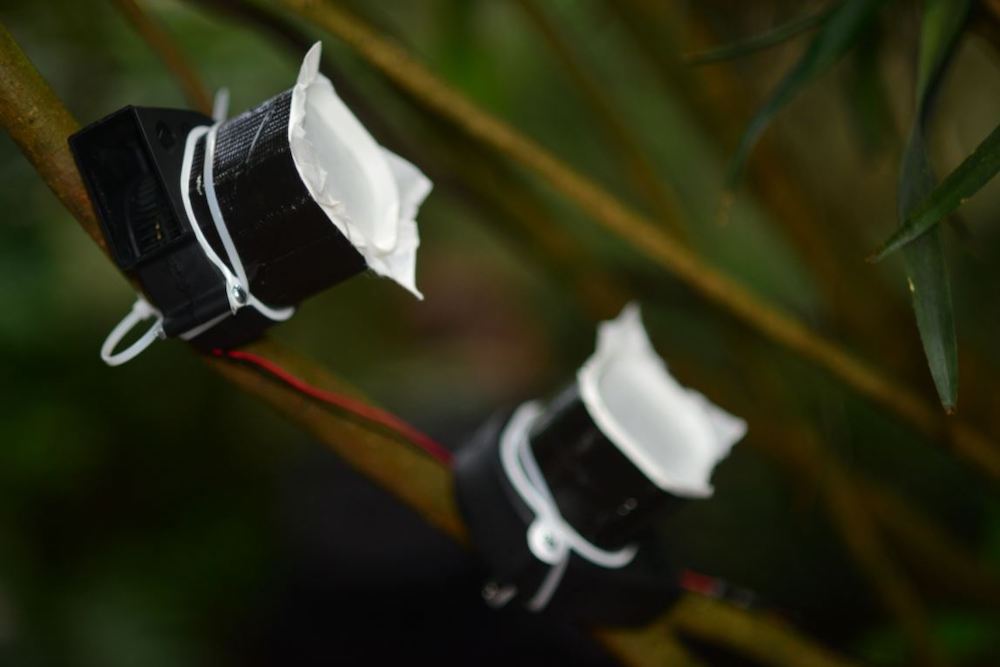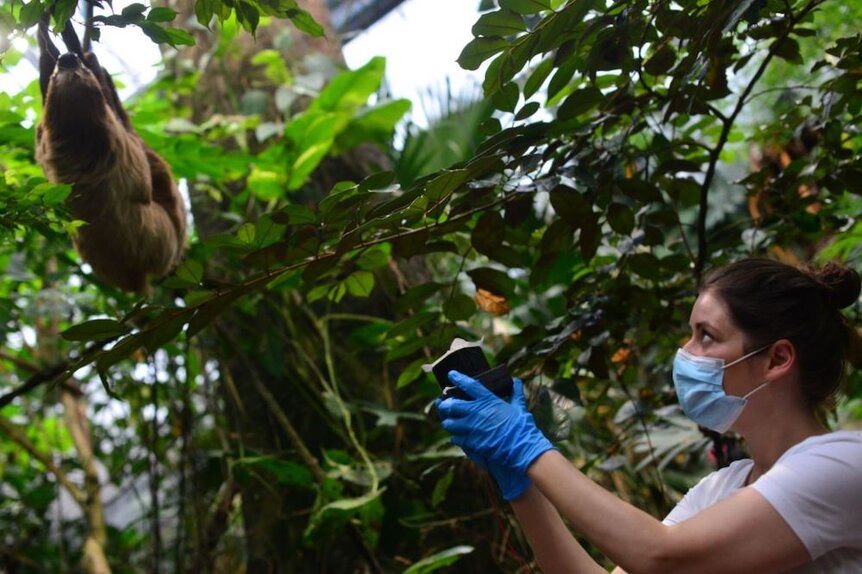Create a free profile to get unlimited access to exclusive videos, sweepstakes, and more!
That wild smell in the air at the zoo has animal DNA in it
Every breath you take is awash in animal DNA, maybe best not to think about it too much.

If you’ve ever been to a zoo, or a farm, or a particularly crowded pet store, you’ve probably noticed the telltale smell that comes along with a bunch of animals all mixed together in a confined space. That isn’t necessarily the smell of DNA, but it’s got DNA in it, and a whole lot of it.
A pair of papers published in the journal Current Biology explores the abundance of human and animal DNA present in the air all around us, and the ways we can capture that environmental genetic material to monitor animal populations.
In a bit of scientific serendipity, two teams who were unrelated and unaware of one another independently began working on the hypothesis that environmental DNA might be abundant and waiting to be captured for study. Both papers were published jointly. Elizabeth Clare, Assistant Professor in the Department of Biology at York University was the lead on one of those studies and spoke to SYFY WIRE about their results.
“Environmental DNA is anything that has been sluffed off the body. It could be dead cells, or it could be hair or saliva. It could be urine and feces that are on the ground and then kicked up. It may even be effectively naked DNA, cells that died and then dumped their contents into the environment,” Clare said.
Previous studies on environmental DNA have taken place in laboratory settings, but the teams wanted to take the work out into the world to see if their suppositions held up. Clare’s team set up shop in a zoo, because they serve as a sort of middle ground between the laboratory and a truly wild scenario.
Many of the enclosures at their zoo closely mimic the environmental conditions of the outside world. Animals are largely exposed to the elements in the same way they would be outside of the zoo, at least as it pertains to the distribution of environmental DNA. Winds, rains, and UV radiation are all present in similar amounts as the outside world and that’s important for understanding the way DNA distributes and persists once it’s been shed.
The team used existing tools which had previously been used for studying environmental DNA in watery environs. They retrofitted their tools to work in open air.
“We had a filter for collecting DNA out of the water and we aimed it at the air,” Clare said. “It has a low-powered pump with a hose, and we attached a sterile vial with a tiny filter inside. It’s analogous to making coffee. You have the water pouring through and the grounds get caught on the filter.”
These pump and filter setups were deployed around various enclosures in the zoo and allowed to gather material. The vials were then removed from the pump and returned to the lab for examination. After analyzing the genetic results, the team found DNA present from zoo animals all over the zoo, as well as native non-zoo animals and humans.
“That’s one of the reasons we picked the zoo. If I go to a farm and I detect DNA from a cow, is it coming from the cow in front of me, or from manure spread in the field, or from a cow ten miles away? If I’m at a zoo and I detect tiger DNA, there’s no other place I could have picked up that signal except the animal that’s right there,” Clare said.
Ironically, despite tigers being one of the largest animals in the zoo, they were particularly difficult to capture DNA from. The relative lack of tiger DNA highlights one of the major challenges present in collecting genetic materials from the environment. For reasons we don’t yet understand, different species deliver vastly different amounts of DNA to their environment, even when they’re closely related.
“We had two species of lemur in the same enclosure. One of them we never detected, and the other was the most abundant DNA source in the entire zoo. Every sample we collected had their DNA,” Clare said.
Understanding the mechanisms at work in the production, distribution, and longevity of environmental DNA will be crucial for its use in species and population monitoring. That’s something scientists are actively working on, but the science isn’t quite there yet. Despite the open questions, gathering environmental DNA has at least one benefit over other biomonitoring methods.
“If you have a camera trap the animal has to walk in front of the camera, if it walks behind the camera, you’ll never know it was there. Environmental DNA is more like a footprint, the animal leaves it behind and then disappears. It means the window to detect them is longer,” Clare said.
In this way it’s particularly suited for capturing signals of rare animals or animals we don’t want to interfere with, like those which are especially sensitive or critically endangered. Clare added, “If we can passively collect information about genetic diversity, suddenly we can start talking about the health of a population without even getting near it.”
Even in areas which don’t appear to have especially large wild populations, their genetic material might remain in place for significant periods of time. This is especially true of places where temperatures are cooler and levels of ultraviolet radiation are low. Each of us, without even knowing it, is constantly swimming in a veritable stew of genetic information. Learning about our environment is just a matter of learning to sift through the soup.



























